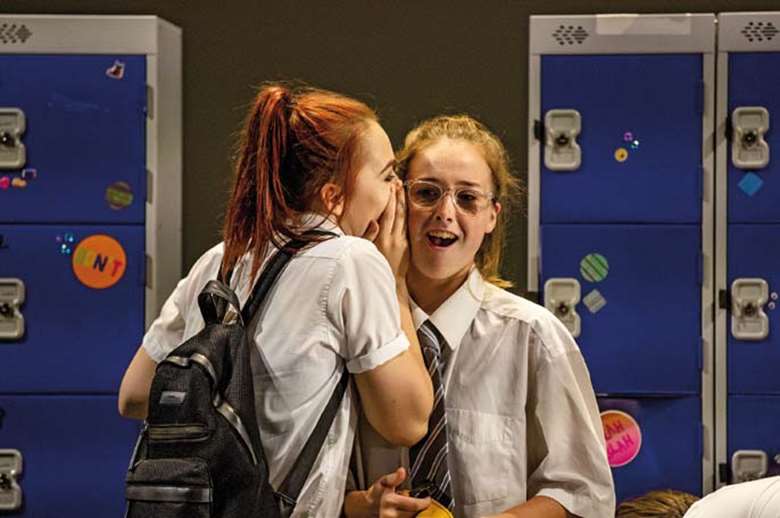Drama Strategy: Rumours and eavesdropping
Patrice Baldwin
Wednesday, May 1, 2019
Patrice Baldwin introduces strategies for the drama studio

The Other Richard
What is ‘Rumours’?
‘Rumours’ enables participants ‘in role’, to generate and spread ideas and suggestions about characters, events and situations.
When might I use ‘Rumours’?
A teacher might use ‘Rumours’ when an incident has occurred in the drama which would stimulate gossip. Rumours within the drama might be spread openly (e.g. in the market place) or secretively (e.g. behind closed doors), depending upon whom the conversation is between and how risky it is that they might be overheard.
For example:
- In a drama based on Tennyson's ‘The Lady of Shalott’, the townsfolk of Camelot might gossip openly about the strange Lady in the tower, who has been heard singing mournfully but has not been seen.
- When Duncan is found murdered in Macbeth's castle, the servants might whisper rumours nervously to a trusted friend.
Whole class ‘Rumours’
Whole class ‘Rumours’ need not last more than a minute or two. It produces many rumours quickly. The activity starts and stops at a signal from the teacher.
The teacher could use Teacher as Narrator to start the activity, for example: ‘The people of Camelot had all heard about the Lady in the tower and often talked about her, amongst themselves…’ (then the teacher gives a ‘start’ signal).
If the rumours aren't spreading much, the teacher might call out ‘Move on’ or ‘Change’ and everyone walks on to gossip to someone else.
The teacher can join in and add rumours too, maybe contributing authentic information, for example ‘I have heard that the Lady has a loom up there and spends all day weaving pictures. Not much of a life, is it?’
Collecting the rumours
Having given opportunity to spread rumours, the teacher can gather them and lead an ‘in role’ gossipy discussion about them.
Eavesdropping
When ‘Rumours’ has been underway for a minute or two, the teacher can freeze the activity and explain that she/he will now pass amongst them, ‘eavesdropping’. The participants stay frozen ‘in role’, until the teacher passes by each of them. As the teacher passes, they come to life and carry on chatting. When the teacher moves away, they freeze again. This strategy lets fragments of everyone's gossip be heard by all. The teacher is like a wandering loud speaker, enabling individual parts of a tableau to be heard in turn. The class should know whether the teacher is eavesdropping in role, for example as a visitor to Camelot.
Group ‘Rumours’
‘Rumours’ can also be developed within groups. Instead of everyone spreading rumours together, small groups can prepare short scenes, maybe of friends or family talking behind closed doors. The scenes are prepared and then performed by each group in turn.
‘Voice collage’ the rumours
Once rumours have been created, each person can select just one sentence or phrase from a rumour. Everyone then stands, close together with eyes closed. Someone speaks their sentence or phrase aloud and others join in when they wish, adding their sentences or phrases. Each person may speak more than once. This improvisation should start and end with a single voice, reaching a climax of voices in the middle.
Is this rumour likely to be true?
Some rumours may be referential, i.e. rooted in the text. Others will have been invented and may be plausible or unlikely. Teachers can set up a human ‘Probability Line’. One end represents ‘False’ and the other end ‘True’. Participants in turn may speak their rumour aloud and position themselves appropriately on the line, justifying their position, for example ‘There is a rumour that the Lady is locked in the tower. This is probably not true because I think she would shout for help.’
Recording the rumours
A 3D, live version of ‘Role on the Wall’ can be set up: someone representing the character stands in the centre of a circle. Rumours can be spoken to or about the character as each person crosses the circle in turn.
What is said can be recorded in writing using a traditional ‘Role on the Wall’. An outline of the character is drawn on paper and what has been said about that character is written around the outline. Self-adhesive labels work well for this, as they can be moved or removed as we learn more about the character at different points in the drama. Also, the more likely a rumour is to be true, the closer it can be positioned in relation to the character's outline.

